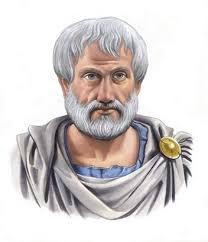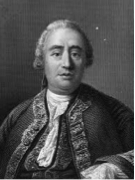
Woody Allen:
“In his autobiographical film Stardust Memories, Allen says, To you, I’m an atheist. To God, I’m the loyal opposition.”

PALEY’S WATCH
In 1802, a brilliant philosopher named William Paley wrote a book called Natural Theology in which he used physical observation about the world around us as evidence for God’s existence.
Paley said that if you were walking across a field and saw a stone lying on the ground, you would think nothing of it. Perhaps the stone had been there for ages and who knows if anything had caused it.
However, if you saw a fine watch lying on the ground, opened it and saw its components, you wouldn’t simply assume that it had been there forever. You would immediately wonder who had made such a thing. Why? Because a watch is a system of interacting components that work together to tell us the time. This sets it entirely apart from the stone.
Paley drew our attention to detail, intricacy and various systems working together to achieve a particular end as clues to discern how something might have come into existence.
Paley concluded that the explanation for the watch had to be a watchmaker, and the explanation for the universe had to be God.
In the 1940s, philosopher Bertrand Russell commented on Paley’s argument: “This argument has no formal logical defect.”

ARISTOTLE
In his On Philosophy, Aristotle wrote about a hypothetical race of people who might have lived underground and never beheld the sky:
“When thus they could suddenly gain sight of the earth, seas, and the sky; when they should come to know the grandeur of the clouds and the might of the winds; when they should behold the sun and should learn its grandeur and beauty as well as its power to cause the day by shedding light over the sky and again, when the night had darkened the lands and they should behold the whole of the sky spangled and adorned with the stars; and when they should see the changing lights of the moon as it waxes and wanes, and the risings and settings of all these celestial bodies, their courses fixed and changeless throughout all eternity – when they should behold all these things, most certainly they would have judged both that there exist gods and that all these marvelous works are the handiwork of the gods.”

ARISTOTLE AND THOMAS AQUINAS
Scholasticism, which was taught in all major European universities for over 1,600 years, had its origins in the teachings of Aristotle. The Catholic Church also tied much of its scholarly efforts to the teaching of Aristotle. In the 1100s AD, Thomas Aquinas expanded upon this tradition with his magnum opus entitled Summa Theologica.
By their observations of the universe, both Aristotle and Aquinas were convinced that, after you follow all of the successive causes back to the beginning, there had to be what they called an “Uncaused First Cause” who they believed to be God. They referred to God as “uncaused” because he preceded everything in existence.

WILLIAM PALEY vs. DAVID HUME (for philosophy students devoted to Hume)
Atheist philosopher David Hume who wrote his major treatise in 1748 carries a heroic status of almost mythic proportions among many atheists. He said that in comparing any two things by analogy, the similarities did not always uniformly hold for the two things being compared.
Unfortunately, there are college graduates who have come away from philosophy classes with some mistaken impressions regarding Hume and Paley.
Atheists commonly assume that Hume was Paley’s intellectual superior, but the Christian philosopher Paley was every bit Hume’s equal.
Second, philosophy students often get the chronology wrong and assume that Hume, in writing his critique about analogies, wrote in response to Paley and gave him an intellectual thrashing. Actually, it was Paley writing in 1802 in response to Hume, who wrote in 1748. Paley was well aware of Hume’s arguments and was responding to them.
Many people are under the misimpression that Hume’s “analogy critique” destroyed Paley’s watchmaker argument before he ever wrote it. However, there are philosophers who believe that Paley’s treatise was NOT based on analogy, but rather what is called an “abductive argument” or “inference to the best explanation”:
o This approach is used in cases where we have limited data to base findings on.
o We first generate a pool of possible explanations or hypotheses.
o From the pool, we select which one is “best” based on an established set of criteria such as explanatory scope, explanatory power, plausibility, less ad hoc, accord with accepted beliefs and comparative superiority.
o The neo-Darwinian theory of biological evolution is an example of “inference to the best explanation.”
Many philosophy majors are not aware that science, particularly in the field of physics, has since vindicated Paley in too many ways for us to count as shown in the blogs on this website.
Now jump back all the way to the 1940s, and you have world-renowned philosopher Bertrand Russell, who was well aware of Hume’s analogy critique, commenting on Paley’s watchmaker argument with these words: “This argument has no formal logical defect.”

